In the fast-moving space of wellness, non-invasive treatments have gained momentum for their ability to help with body sculpting and metabolic wellness. One up-and-coming technology is the LED light therapy, or low-level light therapy (LLLT).
With its origins in dermatology and pain management, this treatment is increasingly being considered for a surprising new frontier: waist and abdominal health. But how could beams of red and near-infrared light possibly influence fat cells or your waistline? It's time to unpack the science and the promise of LED light therapy for your core.

1. Understanding LED Light Therapy
LED light therapy is the practice of exposing the body to a specific wavelength of light, often red or near-infrared, transmitted by light-emitting diodes (LEDs). This noninvasive treatment does not produce heat or harm tissues, instead it operates at the cellular level. Red Light Therapy: Benefits, Side Effects & Uses[1].
That’s the beauty of LLLT: there’s no surgery, no down time, and few side effects have been reported. Treatments can be done in clinics — and even at home, with F.D.A.-cleared devices — and many users say the treatments are painless and relaxing.
2. The Science: How Light May Interact with Abdominal Tissue?
When you expose your skin to red or near-infrared light (between 630 and 850 nm), that light penetrates deeper — all the way to your cells and the tissues underneath your skin. Within those cells, small organs called mitochondria (basically the cell’s energy engines) take up the light, particularly an enzyme known as cytochrome c oxidase.
This light absorption is thought to stimulate a cascade of cellular processes, such as enhanced production of ATP (energy), better blood flow, and anti-inflammatory reactions. For abdominal fat however, these effects could increase metabolic activity, which may mean fat cells are less likely to hang around after being broken down by the body. In combination with healthy habits, that can help maintain a slimmer waistline over time.
3. LED Light Therapy and Its Potential Effect on Fat Cells
Most people ask: Does LED light therapy actually reduce fat? Not a replacement for liposuction or weight loss surgery, but some studies have shown that Low-level laser therapy for weight reduction: a randomized pilot study - PubMed[2].
One possible theory is that the light temporarily changes the fat cell membrane permeability, which allows triglycerides to escape into the interstitial space, where they can be taken up by the body and metabolized — particularly when combined with exercise. Even though the science behind it is under active investigation, fat cell response to light would seem to be real, at least on a small scale.
4. Examining the Impact on Waist Circumference
Several clinical trials have investigated the impact of LED light therapy on waist size. Low-Level Laser Therapy for Fat Layer Reduction: A Comprehensive Review - PMC[3].
But the findings are not cut and dried. These body sculpting effects tend to be relatively small and may vary depending on factors such as treatment frequency, intensity of the devices, and lifestyle.
5. Focusing on Abdominal Fat Reduction
Similar investigations have explored the use of LED light therapy for localized adipose reduction over the abdominal area. In studies where the therapy was combined with mild exercise (such as walking or use of a vibration platform), fat mobilization in the treated area was intensified compared to exercise alone.
It’s not a magic weight loss solution for belly fat, evidence does indicate that LLLT can help with spot reduction. The treatment seems to be particularly effective when combined with lifestyle modifications, as it accelerates results in hard-to-lose fat zones, such as the lower belly or waist.

6. Beyond Fat: Potential Skin Benefits in the Abdominal Region
LED light therapy is more than just shrinking fat cells. Skin health improvements in the treated area, such as increased collagen production and skin elasticity, have also been demonstrated by several researchers. If you have loose skin around your belly post-weight loss or pregnancy, LLLT can potentially tighten the area gradually.
At-home LLLT device users, as well as some clinicians, notice a reduction in cellulite and improved skin texture, which is believed to be related to the affects the therapy has on blood flow and inflammation. The LED-induced anti-inflammatory effect could also explain the enhanced healing and diminished pain of the abdominal muscles after exercise.
7. The Importance of a Holistic Approach: Lifestyle Integration
LED light therapy is optimal when combined with a comprehensive lifestyle. Combined with a diet rich in nutrients and fluids, and regular physical activity, its effects are even more powerful. Those who have taken good care of themselves should expect better and more lasting results.
Instead of considering LLLT to be a “magic pill,” it is better to think of LLLT as an adjunct—a method to assist your body in its own fat burning and healing processes. Sure, it might help give you an extra edge, but at the end of the day, your core strength is really based on movement, nutrition and rest.
8. Potential Influence on Metabolic Factors and Hormones
Emerging animal research and human trials suggest that exposure to red and near-infrared light might affect hormonal influence, like leptin (which regulates hunger) and adiponectin (helps to control glucose levels and the breakdown of fatty acids)[4].
Although a budding science, this metabolic support could act synergistically to amplify the therapy’s fat loss benefit on abdomen. By adjusting the body’s hormonal signals slightly in a positive direction, LED light therapy may help with appetite regulation as well as the reduction of fat storage in the long term.
9. Safety and User Experience
LED light therapy’s safety is one of its best aspects. Since this is a non-invasive technique, there are no incisions, anesthesia, or downtime to recover. Most users feel a pleasant warmth during sessions and no discomfort afterward.
While treatments such as CoolSculpting and liposuction involve procedures and some risk, LED therapy risks are very low. There may be a bit of mild redness for some people, but side effects are uncommon. However, it’s key to use devices that are FDA-cleared and adhere to appropriate usage protocols, especially for at-home units.
10. Making an Informed Decision About LED Light Therapy
LED light therapy is an exciting, low-risk option for those who want to help support abdominal health and slimming of the waist. Though it is not a replacement for diet or exercise, it can be a very helpful addition to a healthy lifestyle.
Results of LLLT differ as they do with any therapy, and the results are best when they are part of a comprehensive program. So, if you’re ready to find a way to target your core with something other than crunches, a little red light might just be the push you’re looking for.
References
1.Cleveland Clinic. “Red Light Therapy: Benefits, Side Effects & Uses.” Cleveland Clinic, 1 Dec. 2021, my.clevelandclinic.org/health/articles/22114-red-light-therapy.
2.Croghan, I. T., Hurt, R. T., Schroedr, D. R., Foken, S. C., Jensen, M. D., Clark, M. M., & Ebbert, J. O. (2020). LLLT for weight reduction-randomized pilot study. Lasers in medical &science, 35(3), 663–675. https://doi.org/10.1007/s10103-019--02867-5
3.Avci, Pinar et al. "Low level laser therapy for fat layer reduction: a comprehensive review." Lasers in surgery and medicine vol. 45,6 (2013): 349-57. doi:10.1002/lsm.22153
4.Figueiro, Mariana G et al. "Light modulates leptin and ghrelin in sleep restricted adults." International journal of endocrinology vol. 2012 (2012): 530726. doi:10.1155/2012/530726



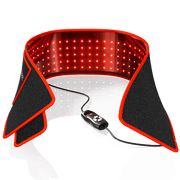









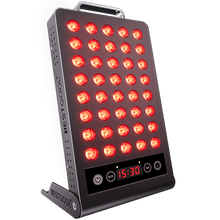
 Small
Small
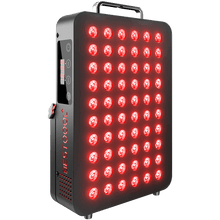
 Moderate
Moderate
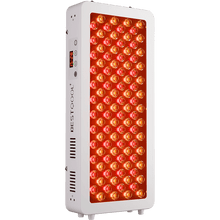
 Moderate
Moderate
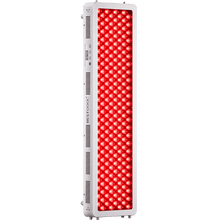
 Moderate
Moderate
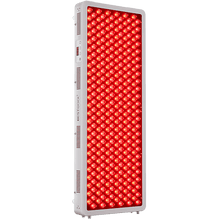
 Full
Full



